Andalusia is one of the most popular destinations for sightseeing tours and relaxing by the sea. The Costa de Sol, a short drive from Malaga, is Spain’s beautiful coastline of beaches, and Granada, Seville and Cordoba are some of Europe’s historical and architectural gems. Let’s take a look at when to go to the south of Spain, where to go and where to stay.
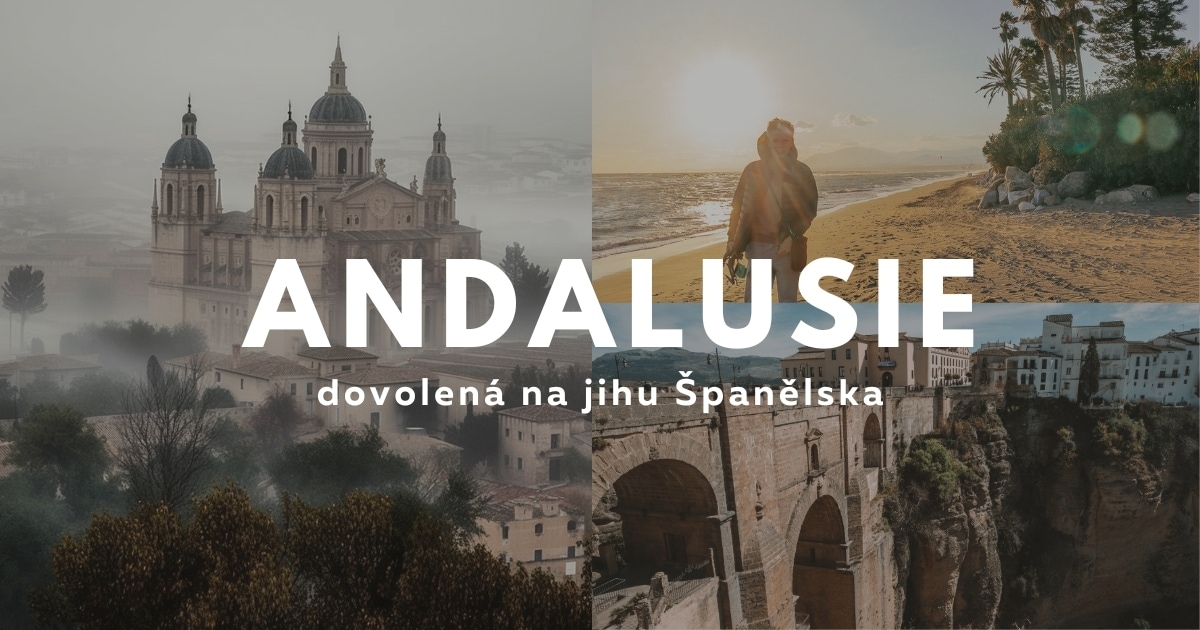
When to go to Andalusia: Weather in southern Spain
If you’re going on a summer holiday and want to go swimming, it’s ideal to plan your holiday between May and September. On the other hand, those of you who prefer sightseeing holidays should avoid the summer months altogether. Cordoba is one of the hottest cities in Europe, and exploring Andalusia during the summer months can be more of a punishment than a reward. 😁 So when to go? We also had beautiful weather at the end of January, but the sure thing for pleasant weather is March – May or October – November.
Malaga weather – when to go swimming
Although I mentioned that Cordoba can be unbearably hot in the summer, this is not the case on the coast in Malaga. Thanks to its location, Málaga and its surroundings are pleasant even during the summer months. And is therefore ideal for a holiday by the sea. Temperatures average around 32 °C during the summer, while in the coldest winter months they do not often drop below 17 °C.
Car rental
In Malaga you can simply rent a car at the airport, we do most of our car searches through RentalCars. The same international chains are available in Malaga as elsewhere in Europe (Hertz, Europcar and Avis). In addition, local companies such as malagacar.com are also available.
20 tips on what to see in Andalusia
Alhambra in Granada:
The Alhambra is the most visited tourist attraction in Andalusia and one of the most important historical monuments in Spain. This impressive fortress and palace complex was built in 14. century Moorish rulers and offers visitors stunning views of the city of Granada and the surrounding mountains.
The interior of the palaces is decorated with magnificent mosaics and decorative elements that reflect the influences of Mediterranean, Islamic and Christian culture.
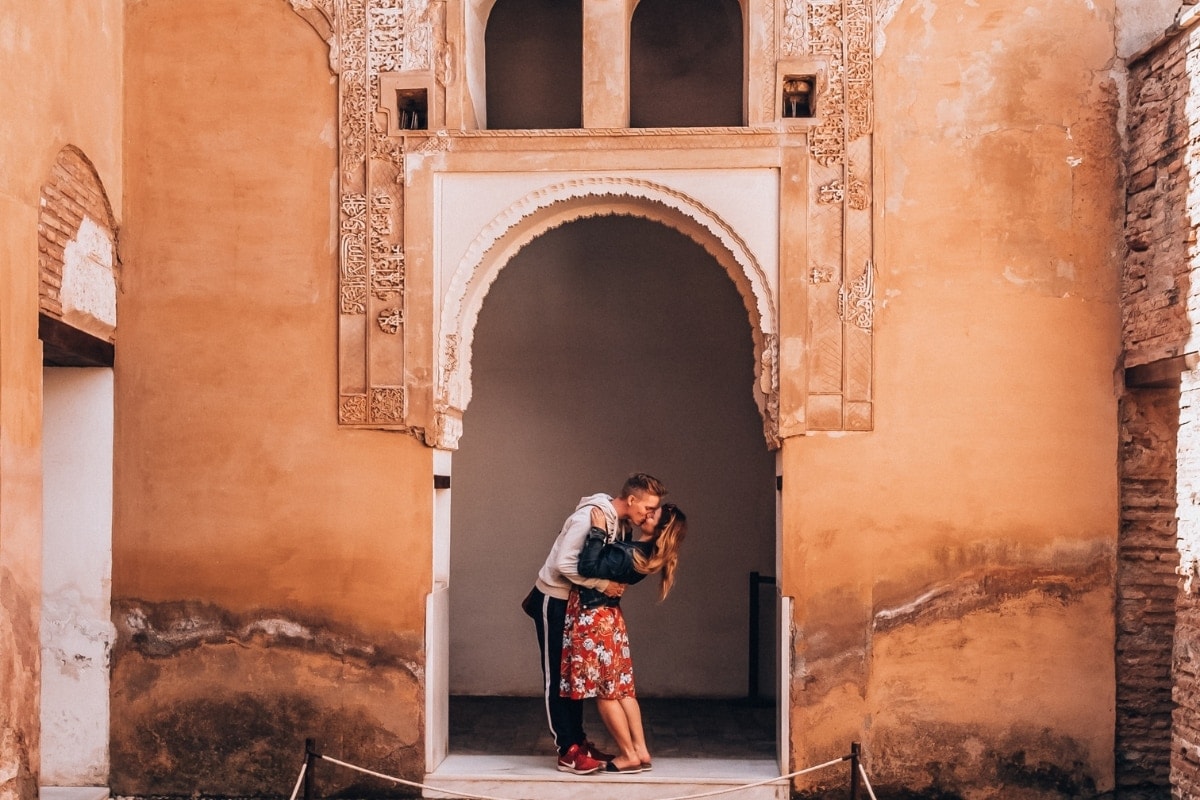
Mezquita in Córdoba
The Mezquita, or Mosque, in Córdoba is a unique monument that reflects the rich history of this city. Originally built as a mosque, it was later converted into a cathedral after the conquest of the city by Christian troops. For this reason, the Mezquita is an incredible combination of Islamic and Christian architecture.
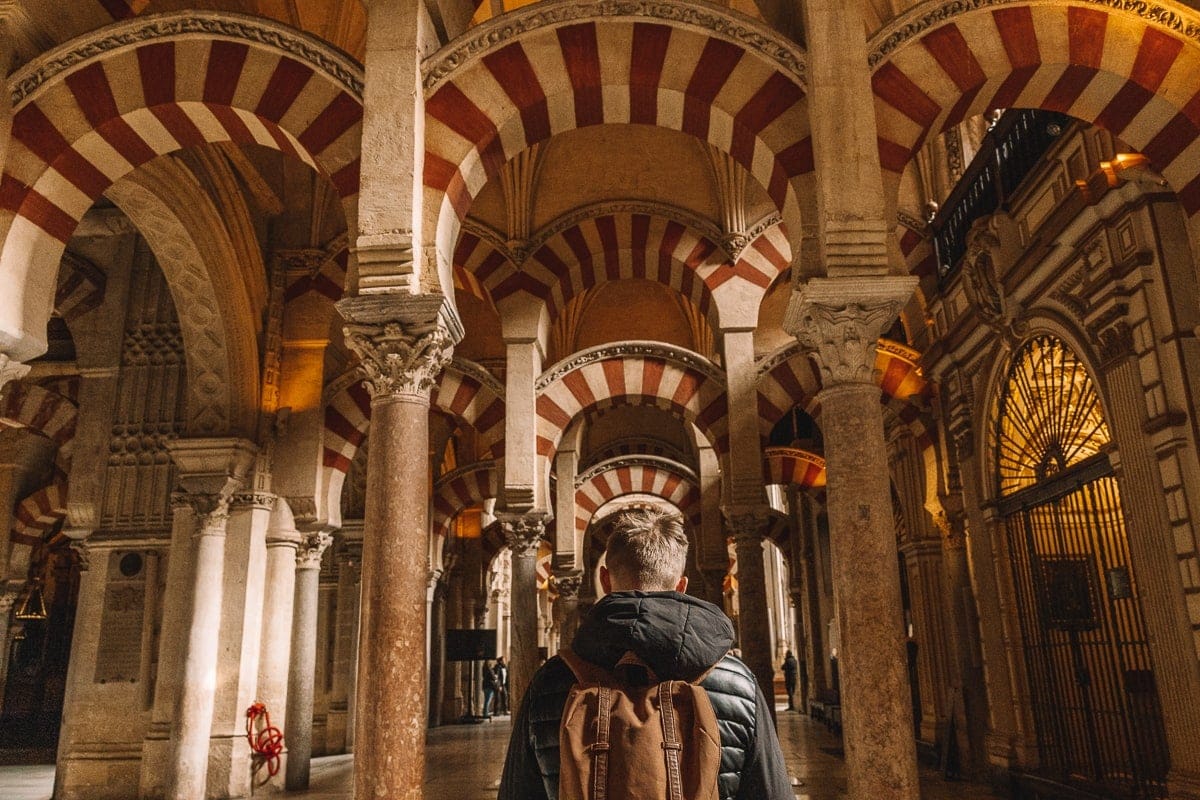
Real Alcázar in Seville
The Real Alcázar is the oldest royal palace in Europe and is still used by the Spanish royal family as their official residence. The palace is a great example of Mudéjar architecture and its extensive gardens are beautiful and full of greenery and flowers.
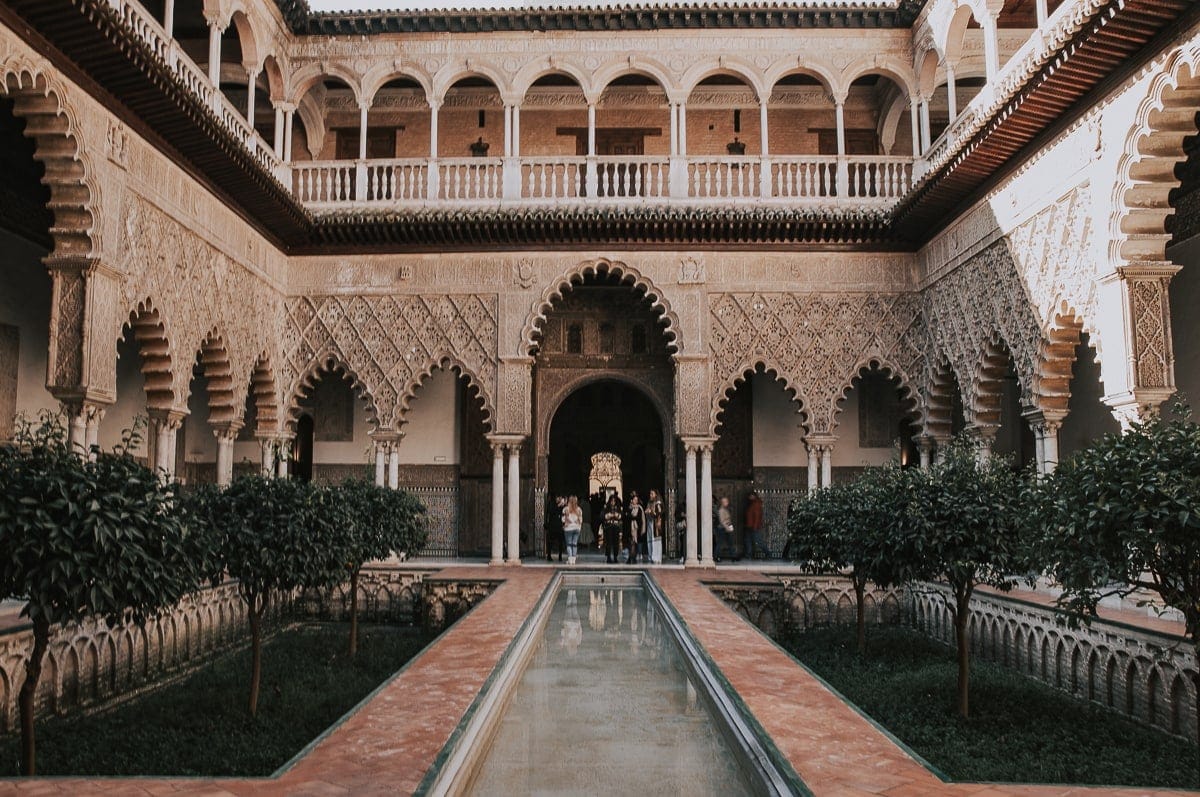
Plaza de España in Seville
The Plaza de España is the largest square in Seville and is a symbolic reminder of Spanish culture and history. The most striking features are the huge columns, the fountain in the middle and the canals where you can rent a boat.
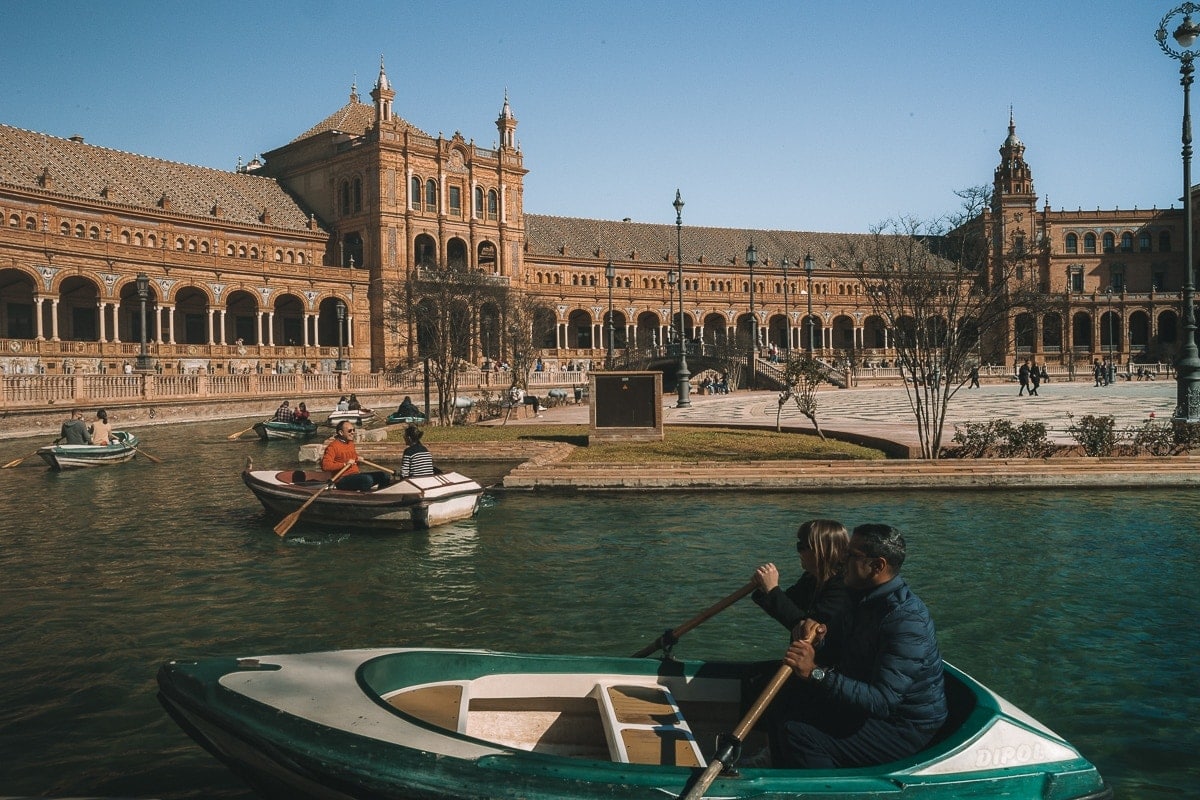
Giralda in Seville
The Giralda is an iconic tower in Seville that once served as the minaret of a mosque. The tower was later converted into the bell tower of Seville Cathedral, but still retains much of its original design and architecture. Be sure to visit it, it is a place with a panoramic view of the city and the surrounding countryside.
Ronda and its canyon El Tajo
Ronda is a historic town in Andalusia, located on a cliff top above the deep canyon of El Tajo. The city offers spectacular views of the surrounding countryside and is full of historical landmarks such as the Puente Nuevo Bridge, the bridge that connects the two parts of the city. It is a popular place among tourists, especially because of its historical and cultural significance.
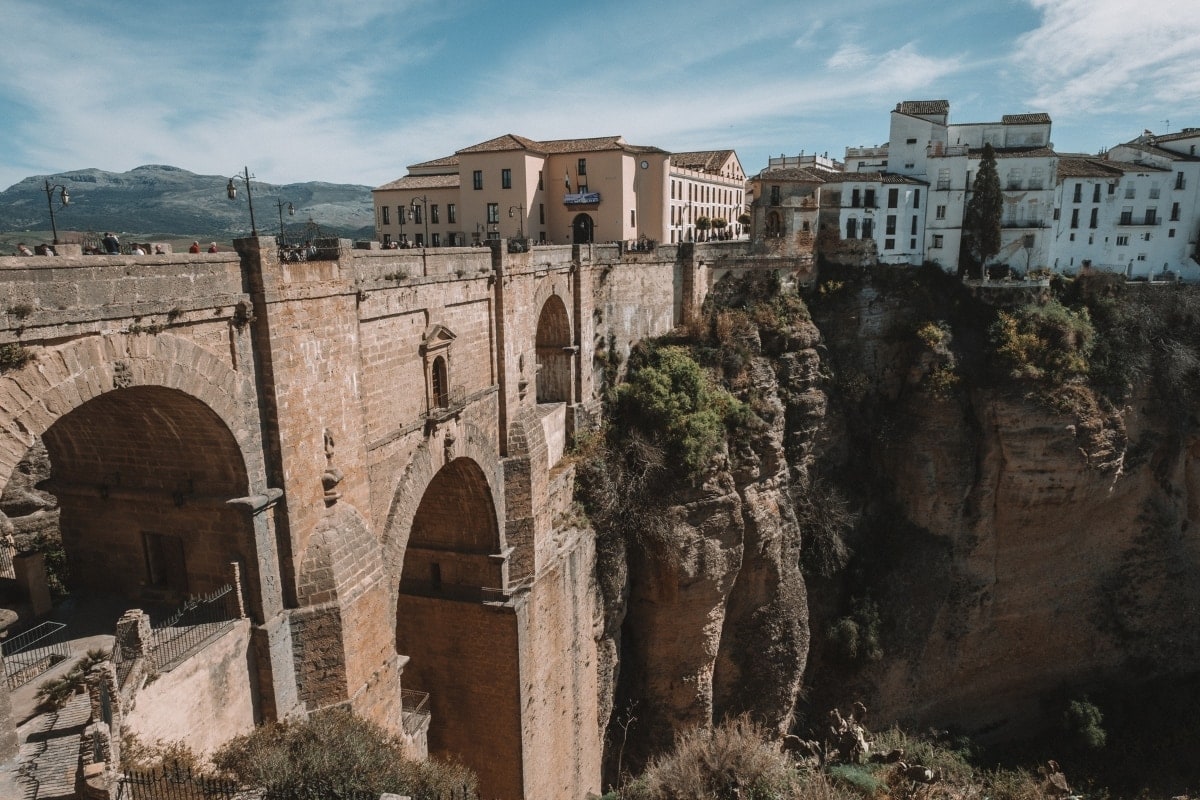
Caminito del Rey in Málaga
The Caminito del Rey is an amazing tourist attraction located in the El Chorro Mountains in Málaga. This rocky pass was a dangerous place in the past, but now serves as one of the most visited tourist attractions in Andalusia. The Caminito del Rey offers spectacular views of the surrounding countryside and is popular with tourists looking for an adrenaline rush.
Costa del Sol
The Costa del Sol is a popular tourist destination in Andalusia, offering beautiful beaches and sunny weather most of the year. The Costa del Sol stretches along the Mediterranean coast and is full of tourist attractions, including restaurants, bars and shops.
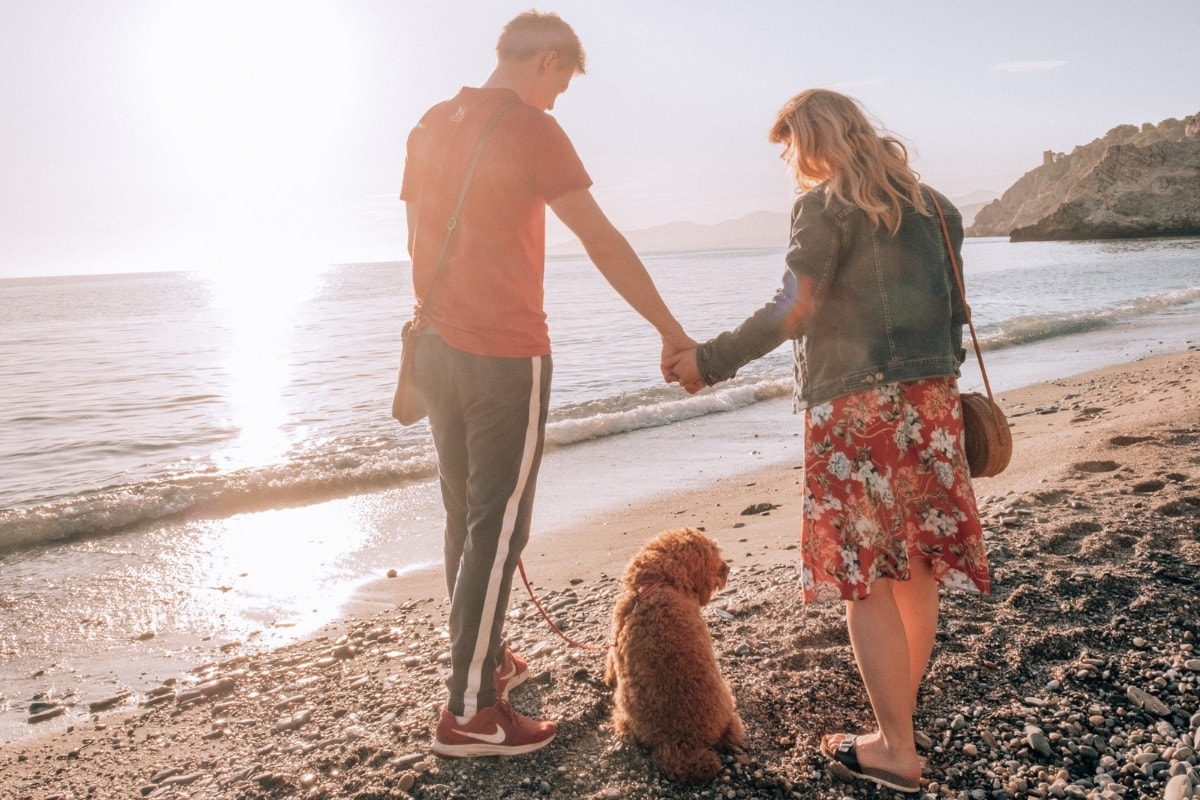
Cabo de Gata in Almeria
Cabo de Gata is a national park in Almeria, known for its stunning beaches and unspoilt nature. The park offers many hiking activities such as hiking, diving and bird watching. Cabo de Gata is the ideal place for those looking for a peaceful holiday in nature.
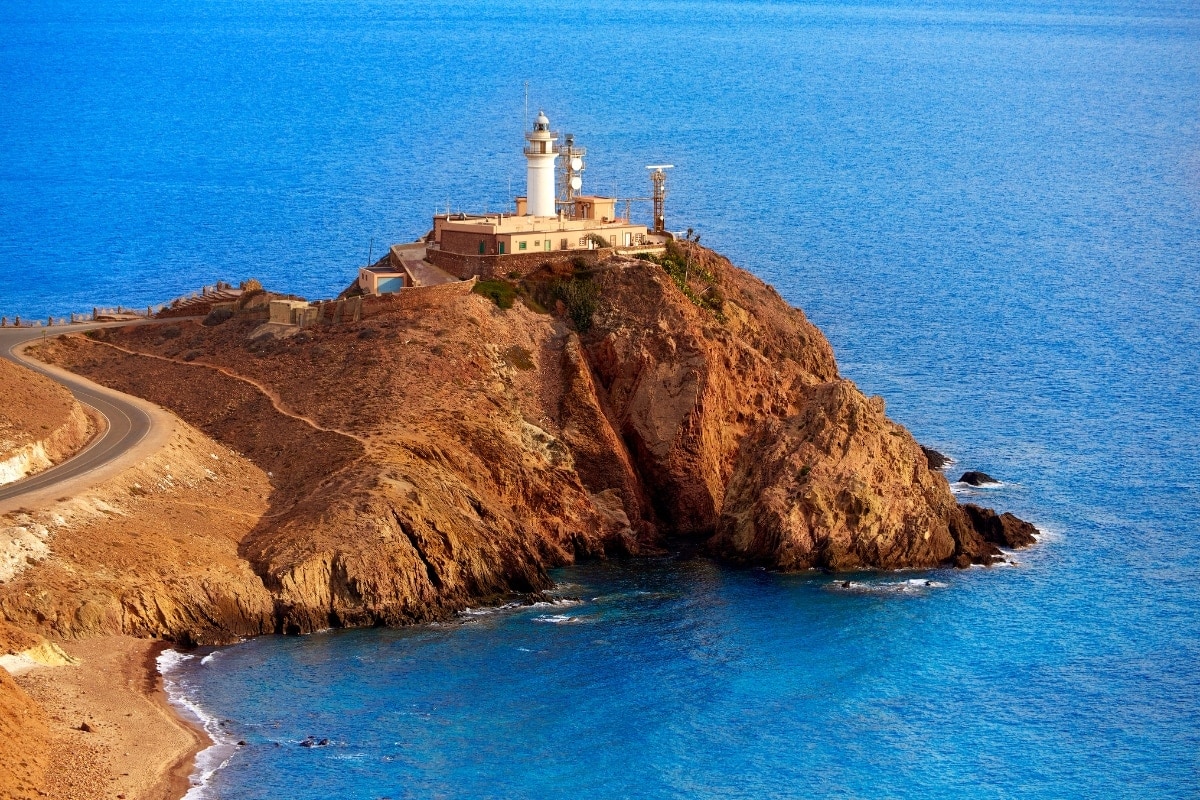
Frigiliana
A picturesque white village with narrow streets lined with flowers and offering breathtaking views of the surrounding countryside and the sea.
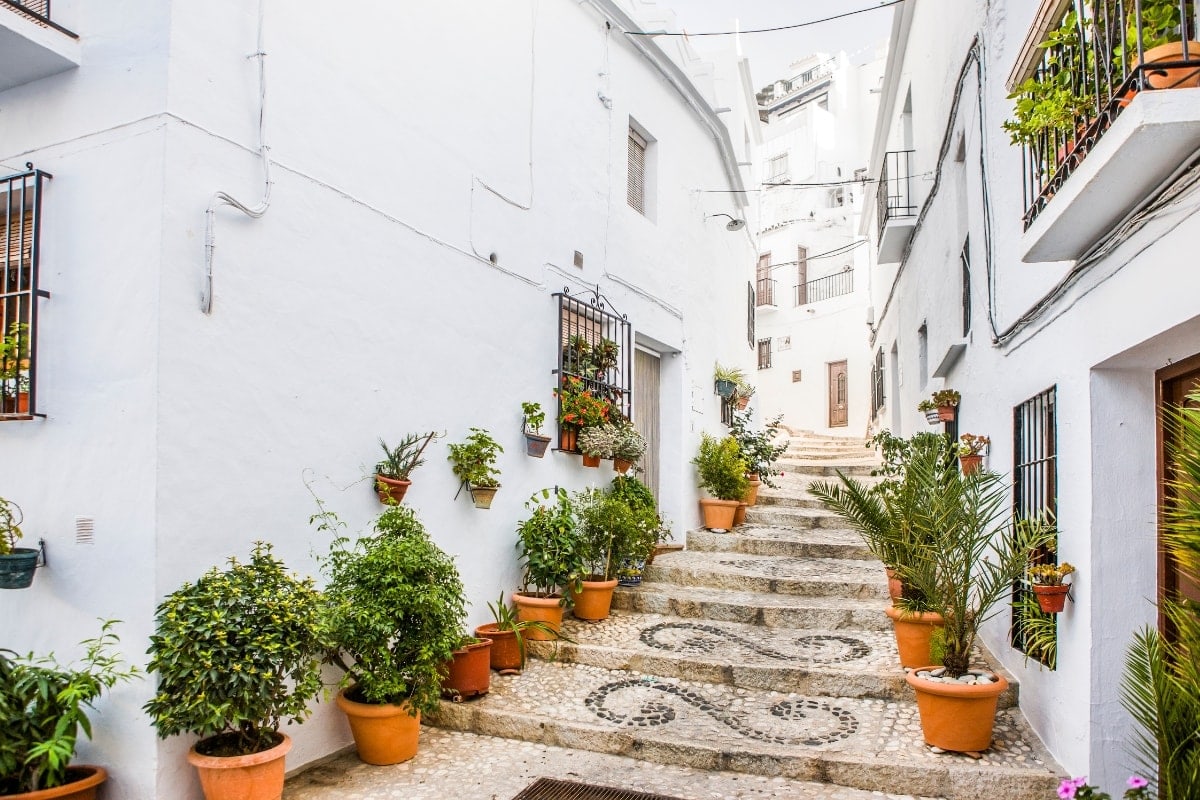
Cueva de Nerja
An impressive cave with many stalactite and stalagmite formations and one of the largest cave chambers in the world.
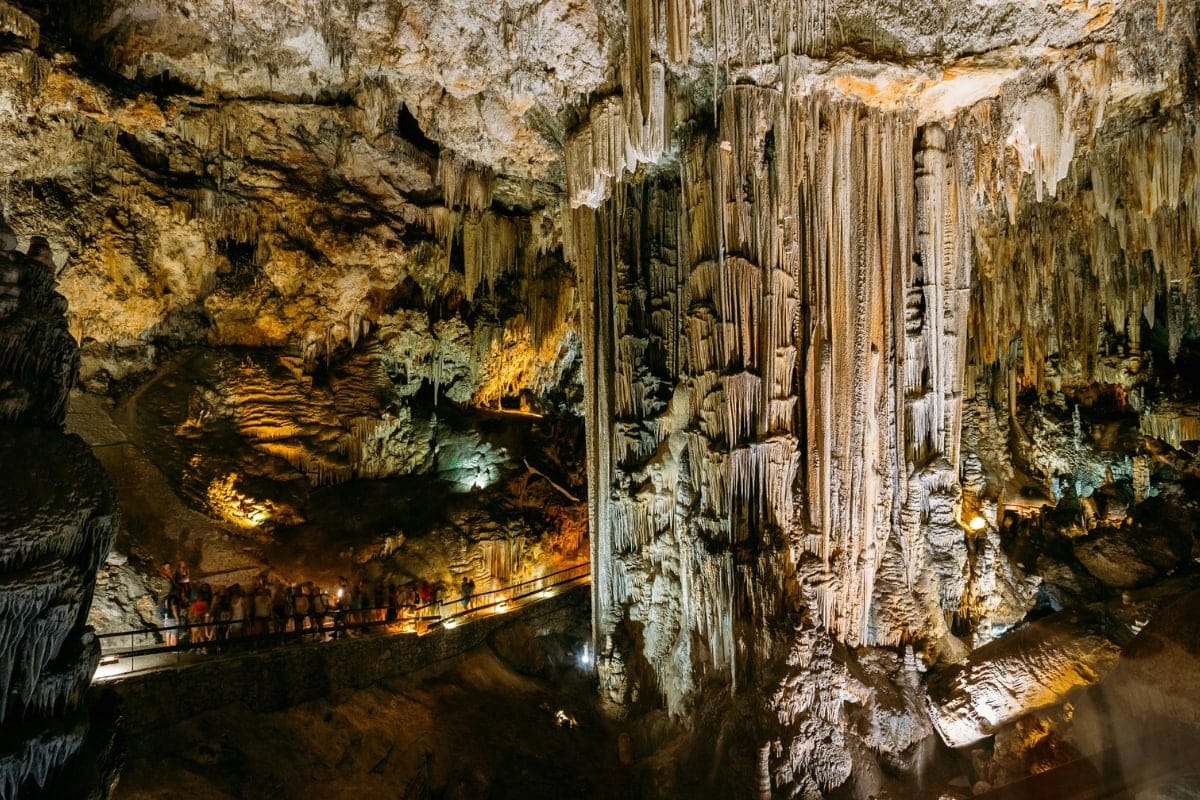
Setenil de las Bodegas
A unique town built into the rock that forms the roofs of its houses and streets.
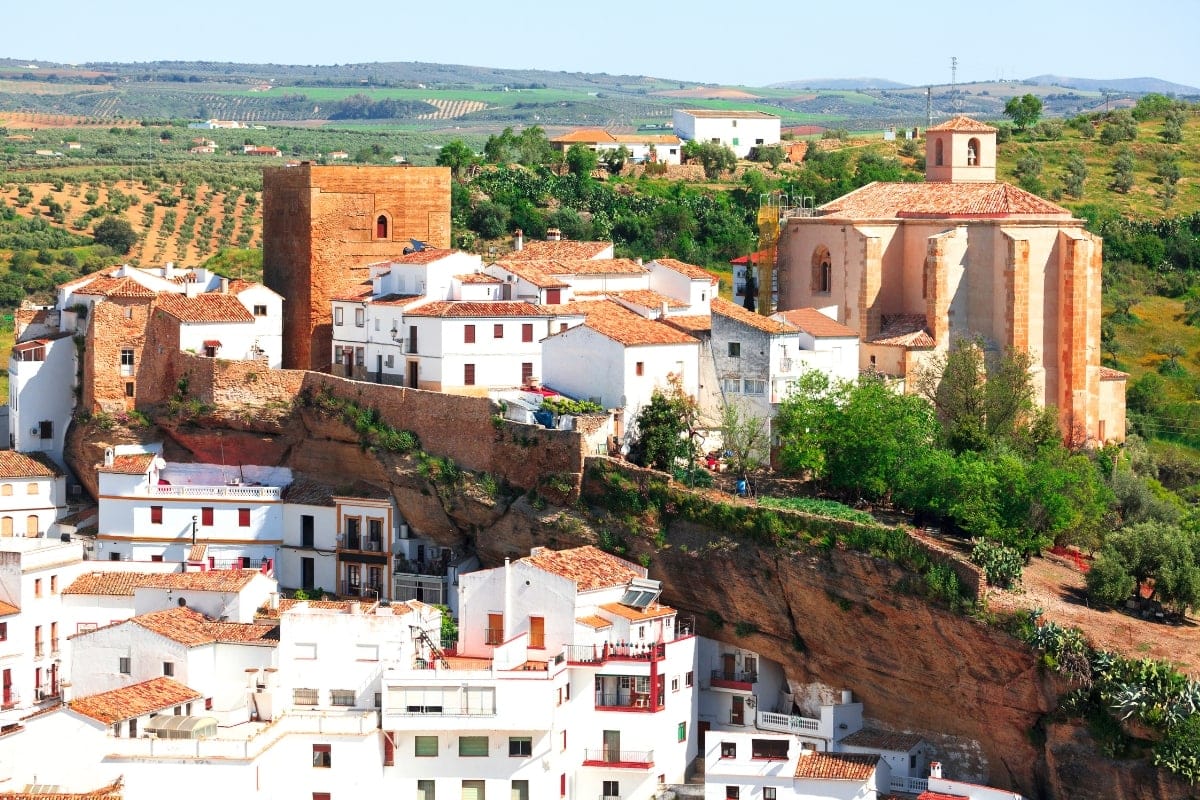
Parque Nacional de Doñana
A large national park with rich flora and fauna, including rare bird species and Iberian lynx.
Jerez de la Frontera
A town famous for its wine and sherry. Visit the bodegas, the beautiful Alcázar and Flamenco.
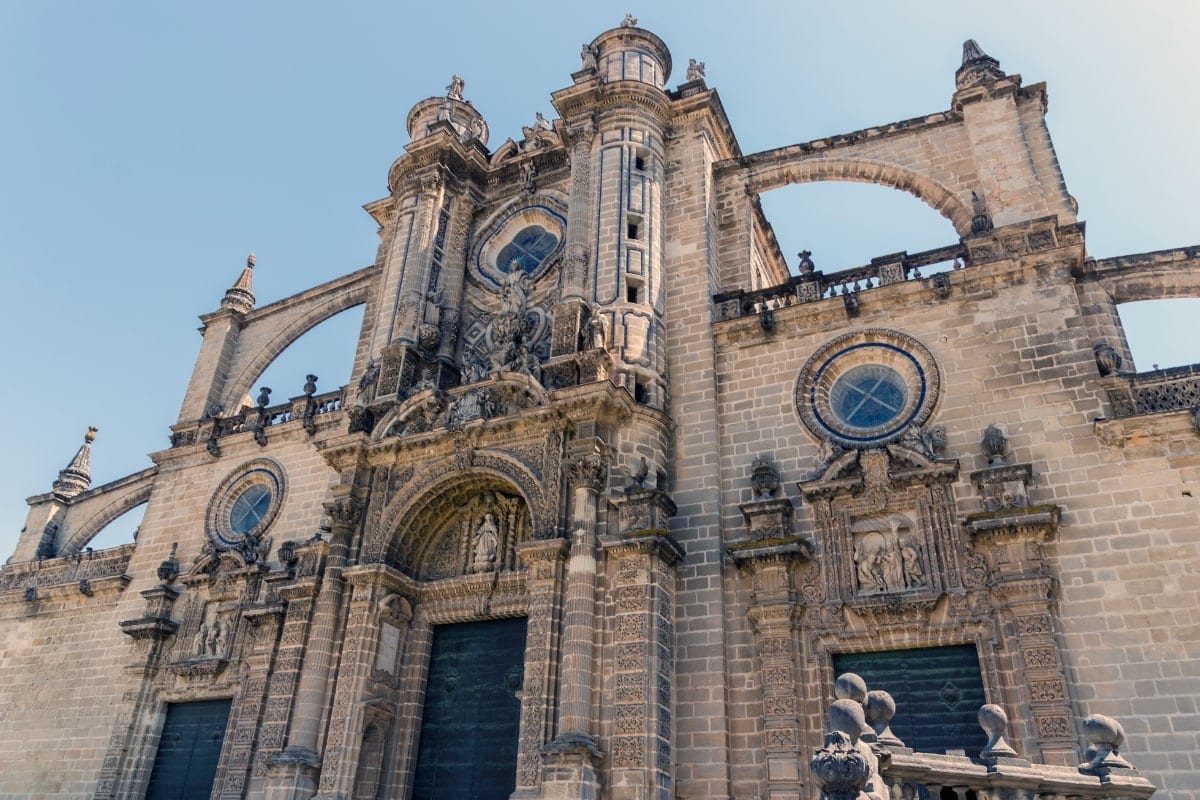
Cadiz
An ancient port town with a rich history, a cathedral and beautiful beaches. Famous for its carnival and seafood.
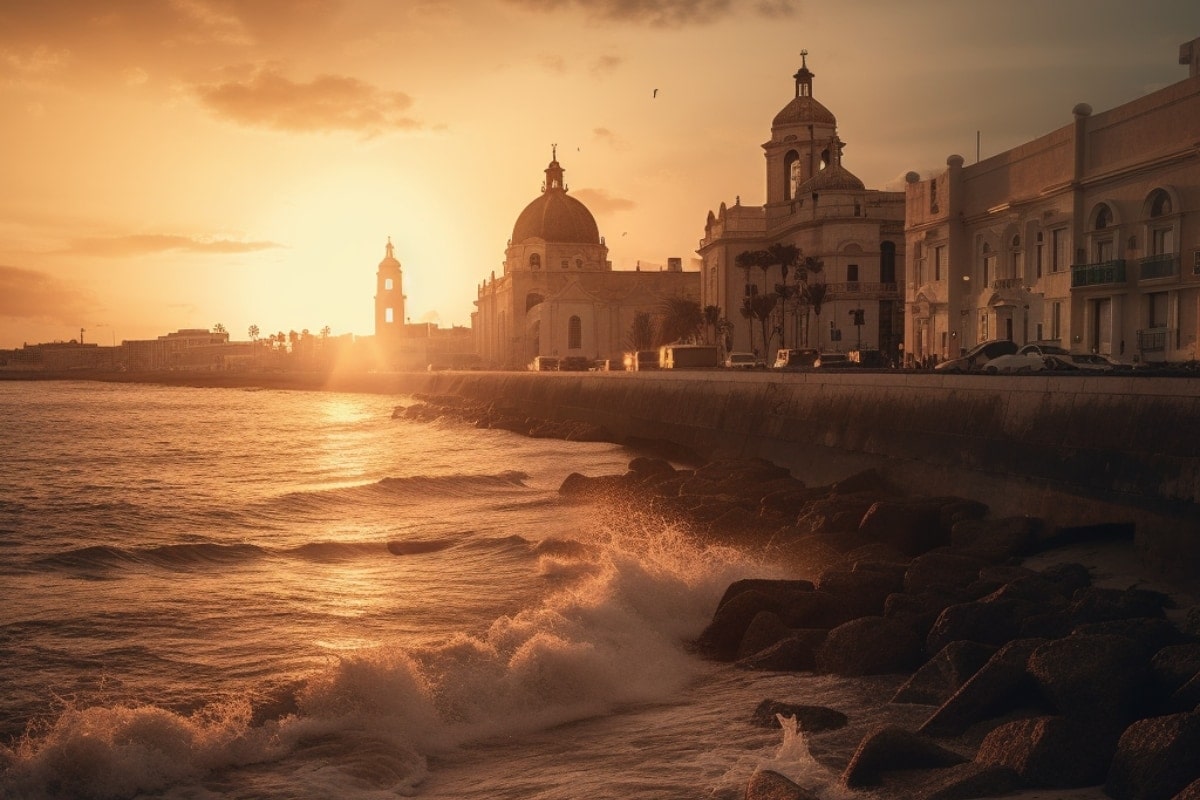
Ubeda and Baeza
Two neighbouring towns that are UNESCO listed for their Renaissance monuments. Walking through the streets of both cities is like a journey back in time.
Sierra Nevada
A majestic mountain range that offers skiing in winter and hiking or cycling in summer. The highest mountain is Mulhacén, the highest peak in mainland Spain.
Marbella
A luxury resort on the Costa del Sol, famous for its beaches, golf courses and the yacht harbour of Puerto Banús.
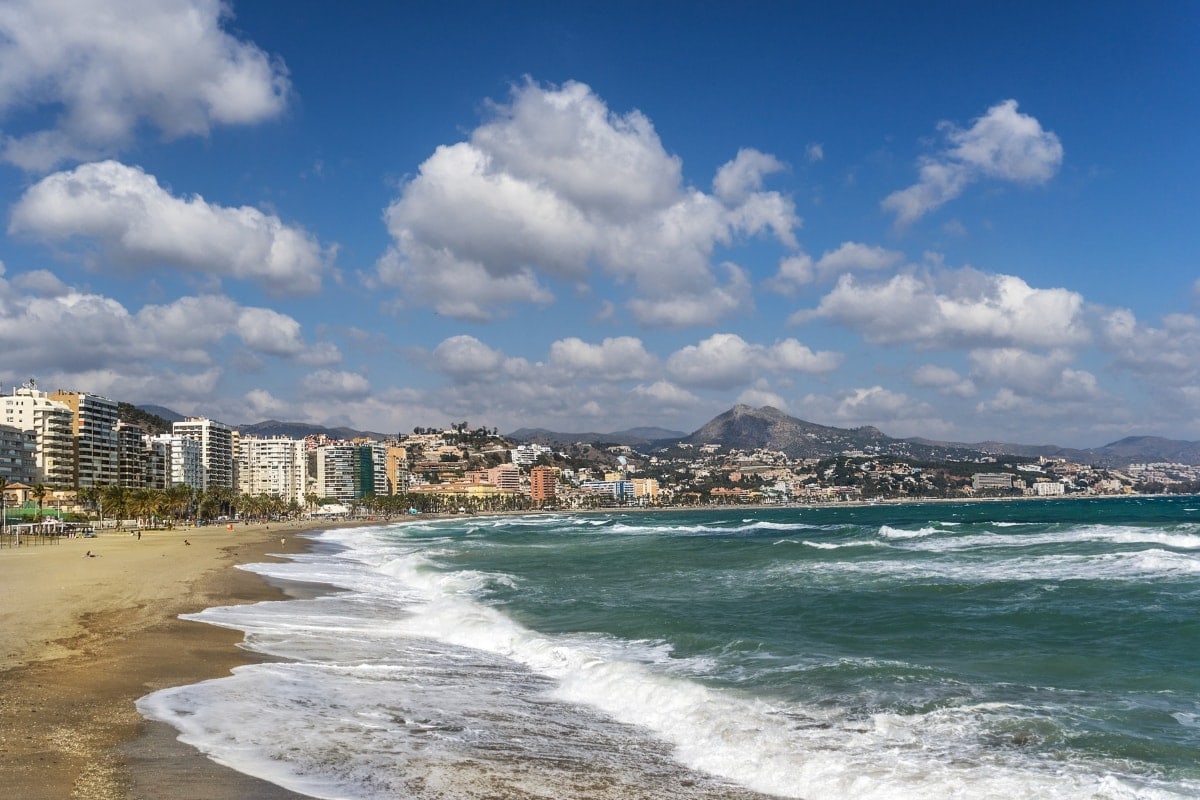
Antequera
A city with a large number of historical monuments such as the Alcazaba Fortress, Dolmen de Menga and El Torcal, a natural park with fascinating limestone rock formations.
What is flamenco?
Flamenco is a live performance showcasing the traditional Andalusian dance and music genre called flamenco. Flamenco originated in Spain, particularly in the Andalusia region, and is characterised by emotive singing, energetic dancing, guitar music and rhythmic clapping.
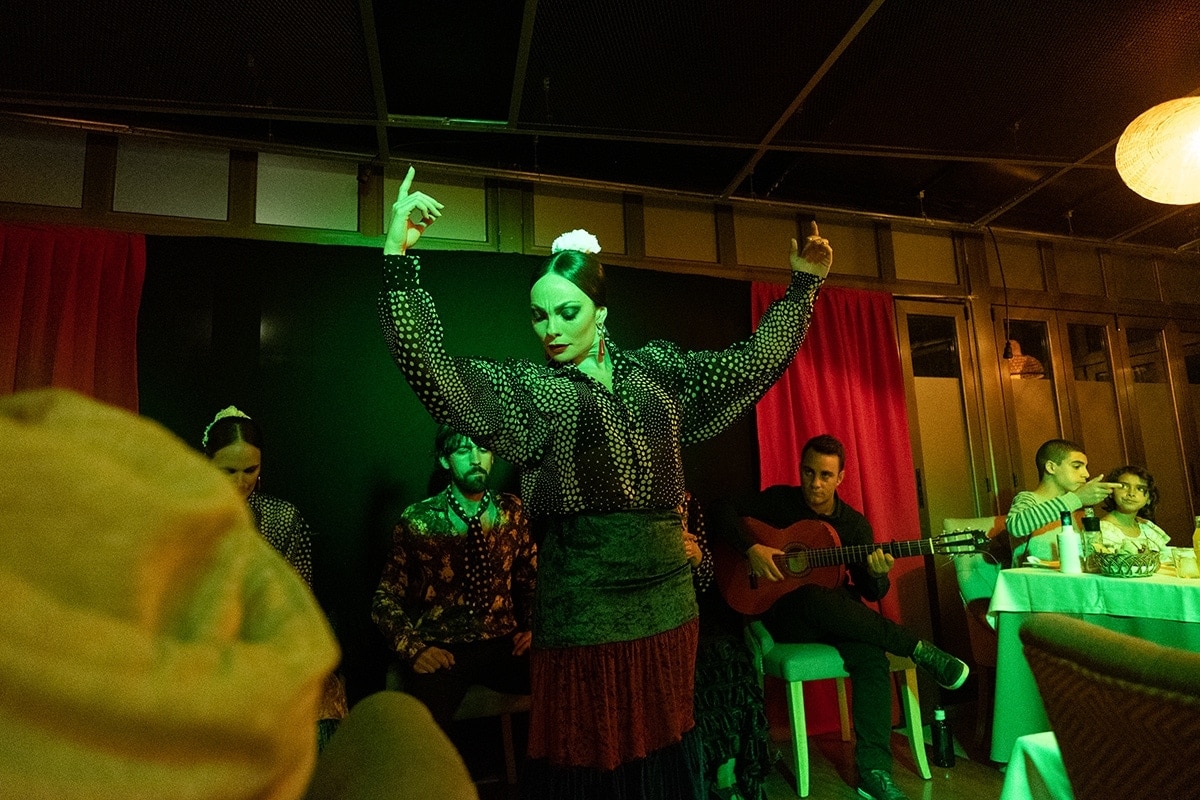
Flamenco usually includes dancers (bailaores and bailaoras), singers (cantaores) and guitarists (guitarristas) who together perform different forms and styles of flamenco. The performance is dramatic and passionate, with an emphasis on emotional expression and improvisation.
Flamenco shows can often be seen in traditional Andalusian cities such as Seville, Granada or Córdoba and can be part of the cultural programme in restaurants, theatres or special flamenco clubs called “tablaos”.
Typical food in Andalusia – What to taste on holiday in Spain
Spanish cuisine is very meat-based, so we have to admit that we don’t really seek it out, but we do enjoy the large selection of Indian restaurants. Traditional dishes in Andalusia include:
- Gazpacho, a cold soup of tomatoes, cucumbers, peppers, onions and olive oil.
- Salmorejo, another cold soup similar to gazpacho, often served with a piece of ham or egg.
- Pescaíto frito, fried fish pieces served as tapas.
- Jamón ibérico, a delicious ham from Iberian pigs that are fed a high-quality diet and roam freely in the countryside.
- Tortilla española, a Spanish potato omelette often served as tapas.
- Flamenquín, fried meat rolls stuffed with ham and cheese.
- Rabo de toro, braised beef tail, often served with rice or potatoes.
- Porra antequerana, another cold soup, similar to gazpacho and salmorejo, but with more bread and garlic.
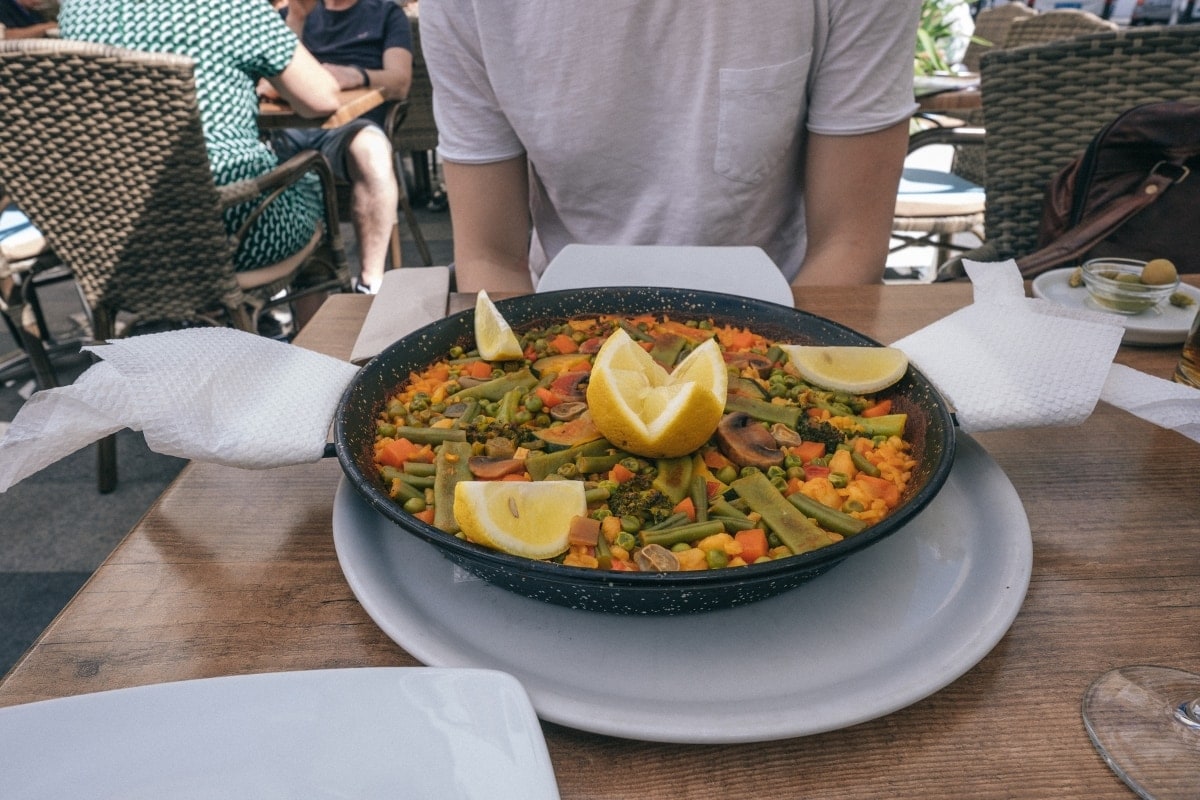
7 day roadtrip itinerary in Andalusia
Andalusia is certainly one of the most visited regions in Spain. It’s no wonder, you’ll find beaches, but also beautiful cities and nature to explore. If you’re planning a trip to Andalusia, we’ve put together a 7-day itinerary of the best places to visit.
Day 1: Málaga
Where to stay: The ESTUDIO EN TORREMOLINOS CENTRO and B&B Casa Rubí are highly rated.
The most common flight from the Czech Republic is to Malaga, so this will probably be your starting point.
On arrival in Málaga, check in and head out for a tour of the Alcazab, an imposing fortress that towers over the city and provides spectacular views of the surrounding countryside. You can also visit the Picasso Museum to learn about the work of this famous painter and his influence on the art scene. Malaga is an ideal starting point for the Caminito del Rey, but it is essential to book the activity well in advance.
Book a Flamenco dance performance for the evening.
Where to stay in Malaga: If you’re looking for something more luxurious, check out the H10 Croma Málaga, a cheaper hotel in the centre of Malaga is the Carlos V Malaga.
Day 2: Málaga – Ronda (1 hour 45 minutes)
Get there early to avoid the crowds of tourists. On the way you can stop in the town of Setenil de las Bodegas. On arrival in Ronda , head straight for the Puente Nuevo, this imposing bridge crosses a deep valley that divides the city in two.
Puente Nuevo is the most visited place in Ronda. You can also visit the Plaza de Toros, one of the oldest bullfighting arenas in Spain, the Baños Árabes, the Palacio de Mondragón or the Alameda del Tajo. For more tips, see our article on Ronda.
Don’t forget to visit Mirador de Aldehuela, where you can enjoy panoramic views of the surrounding countryside. Afterwards, stay in Ronda or head to Seville. We recommend this more, as it will get you ahead of the crowds of tourists in the morning.
Where to stay in Ronda: If you do decide to stay in Ronda, one of the best rated accommodations is La Escondida Ronda, a B&B.
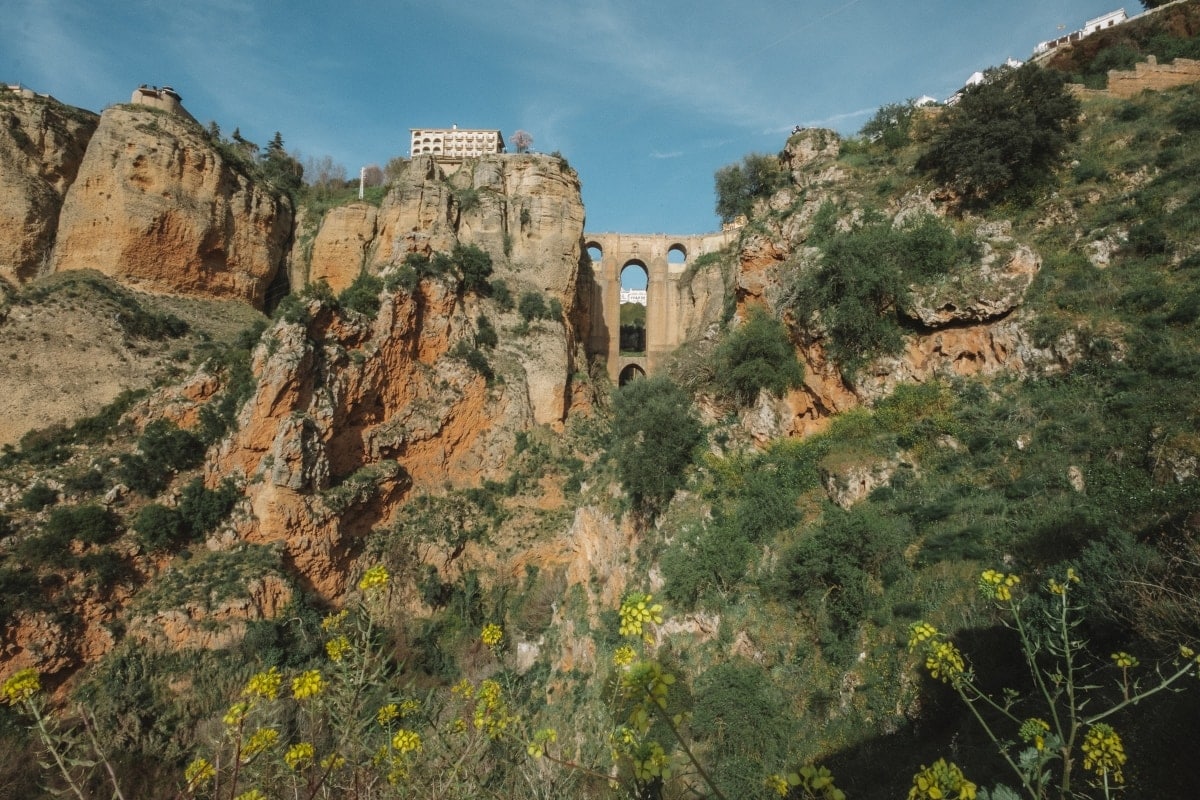
Day 3: Ronda – Seville (2 hours)
In Seville, head first to Santa Maria de la Sede, the largest Gothic cathedral in the world and the third largest cathedral overall. Don’t forget to visit the Giralda, a former minaret that has been converted into a bell tower, from where you have a breathtaking view of the entire city.
Then head to the Royal Palace of Alcázar. This magnificent palace has been rebuilt and extended several times and is one of the finest examples of Mudéjar art in Spain.
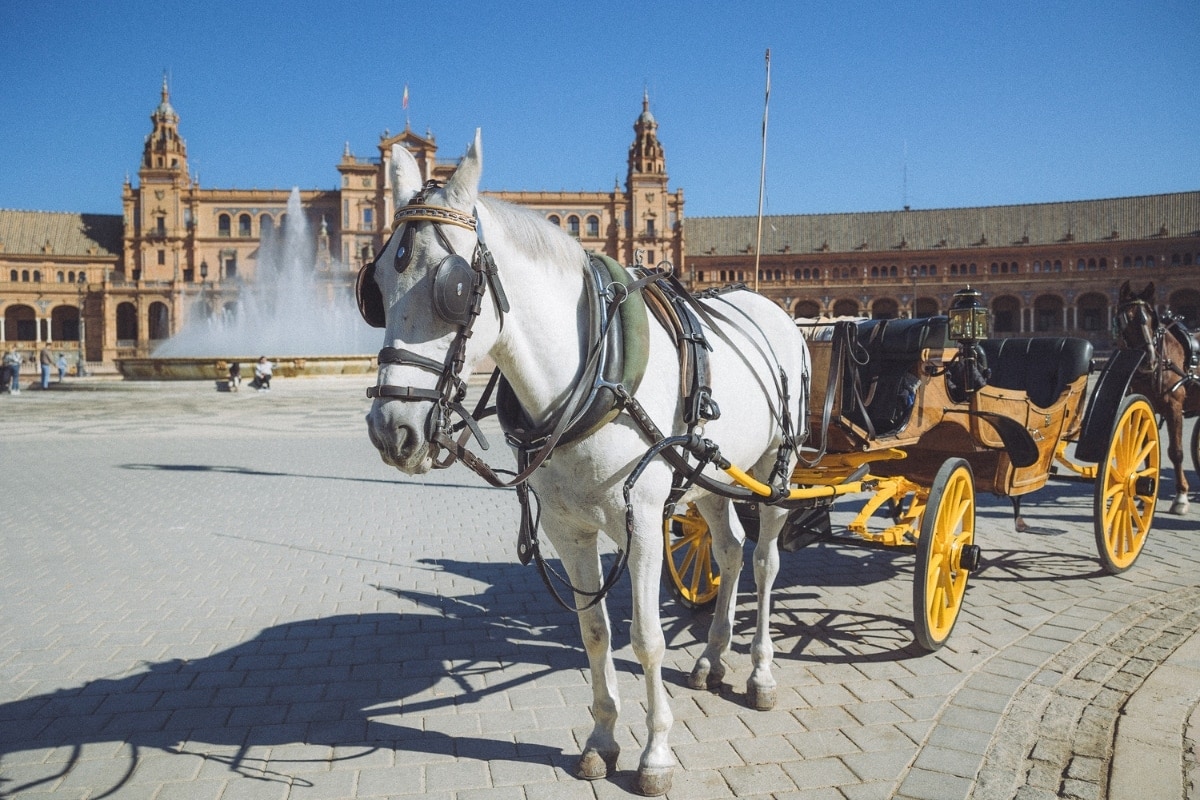
After lunch, head to Plaza de España, a monumental square built for the 1929 Ibero-American Exposition. There’s a huge park just opposite Plaza de España where you can cool off and relax.
To finish today, take a look at Barrio Santa Cruz, the former Jewish ghetto, now a picturesque neighbourhood with narrow streets, white houses and small squares. More information in our article 32 tips on what to see in Seville.
Where to stay:
- The cheap option: Santacruz Hostal Plaza
- The golden mean: Apartamentos Reyes Catolicos
- Hotel Colón Gran Meliá – The Leading Hotels of the WorldOpens
Day 4. Sevilla – Cordoba (45 minutes)
To Cordoba Get there early, I would honestly recommend going to Cordoba again the night before and staying there. First,visit the Mezquita, a symbol of the Moorish legacy in Córdoba.
In Cordoba, you should not miss the Jewish Quarter, the Alcázar de los Reyes Cristianos, the Royal Palace with its magnificent gardens and views of the Guadalquivir River, and a visit to the Roman Bridge and the surrounding parks and gardens such as the Jardines de la Victoria and the Jardines Juan Carlos I.
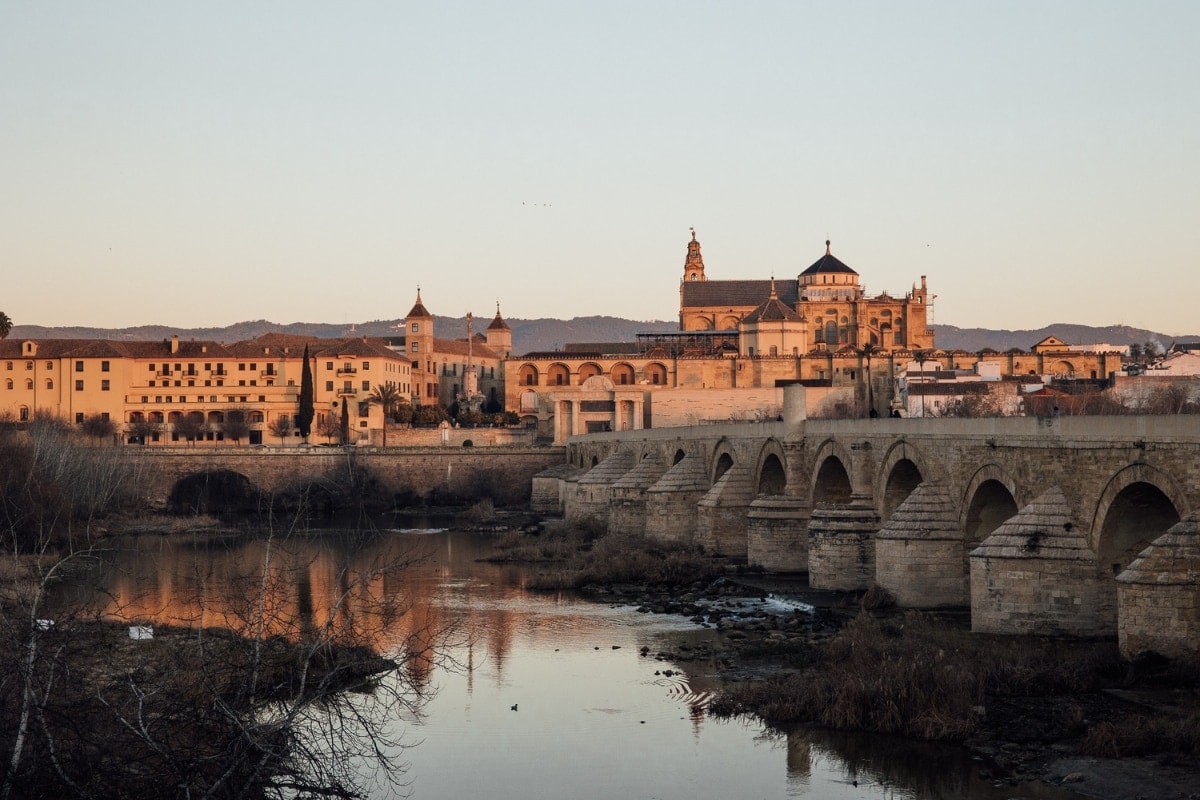
Enjoy dinner in one of the traditional Andalusian restaurants, where you can taste local specialities such as salmorejo, flamenquín or rabo de toro.
More tips can be found in our article on Cordoba.
Where to stay:
We recommend staying right in the centre at the Hotel Hesperia Cordóba, where you can bring your dog and park your car in the hotel. The hotel has a rooftop bar in the summer and has spectacular views of the city.
Day 5: Córdoba – Granada (2 hours 7 minutes)
Granada is once again one of the most visited places in Spain, so be prepared for quite a lot of tourists (even in low season). The most popular is the Alhambra, where you should head straight for the opening. You shouldn’t miss the Generalife, the summer palace of the Nasrid rulers with its gardens and fountains, and be sure to end your visit with a stroll through the historic Albayzín district with its narrow streets, whitewashed houses and spectacular views of the Alhambra.
Read our article on what all to see in Granada.
Where to stay:
- Cheap accommodation: Hotel Macià Real De La Alhambra
- Luxury accommodation: Boutique Hotel Luna Granada Centro
Dinner in a local restaurant
Day 6: Granada – Jaén (1 hour 15 minutes)
Jaen is not that big and a visit won’t take you more than 3-4 hours, so I recommend to spend the morning in Granada. After lunch, head to Jaén, where the beautiful cathedral in the centre is one of the most important examples of the Spanish Renaissance. See the Castillo de Santa Catalina, a fortress with spectacular views of the city and surrounding countryside. You can also visit the Baños Árabes, a well-preserved Arab bath located in the Palacio de Villardompardo.
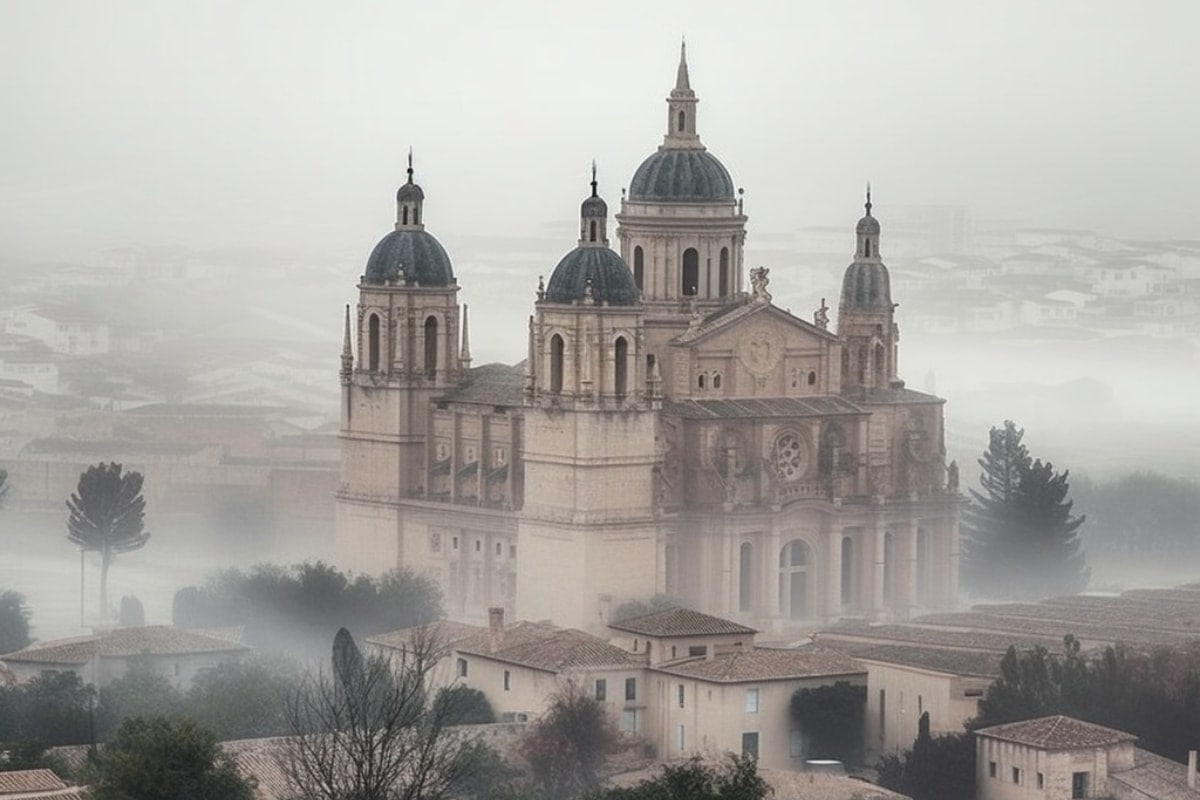
Enjoy dinner in one of the local restaurants where you can taste traditional dishes from Jaén and the surrounding area, such as pipirrana, ajo blanco or sample the local olive oil, of which the locals are duly proud.
Where to stay:
- Cheap option: Hotel Europa
- Luxury option: the Parador de Jaén
Day 7: Jaén – Málaga (2 hours 30 minutes)
Departure from Jaén towards Málaga, the journey takes about 2 hours and 30 minutes. If you’re not flying out yet and will be relaxing on the Costa del Sol, check out our tips, things to do in Malaga.
Andalusia roadtrip itinerary for 10-14 days
Day 1: Arrival in Málaga
You can read what to do in Malaga in the 7-day itinerary above or in our article about Malaga.
Where to stay: The ESTUDIO EN TORREMOLINOS CENTRO and B&B Casa Rubí are highly rated.
Day 2: Málaga – Ronda (1 hour 45 minutes)
After breakfast, departure from Málaga towards Ronda, the journey takes about 1 hour and 45 minutes. Visit the Puente Nuevo, an impressive bridge connecting two parts of the city, the Plaza de Toros, a historic bullring, and the Mirador de Aldehuela, a scenic lookout with spectacular views of the surrounding countryside.
What to do in Ronda read in our article.
Where to stay in Ronda: If you do decide to stay in Ronda, one of the best rated accommodations is La Escondida Ronda, a B&B.
Day 3: Ronda – Seville (2 hours)
You can read what to do in Seville in the 7-day itinerary above or directly in our article 32 tips on what to see in Seville.
Where to stay:
- The cheap option: Santacruz Hostal Plaza
- The golden mean: Apartamentos Reyes Catolicos
- Hotel Colón Gran Meliá – The Leading Hotels of the WorldOpens
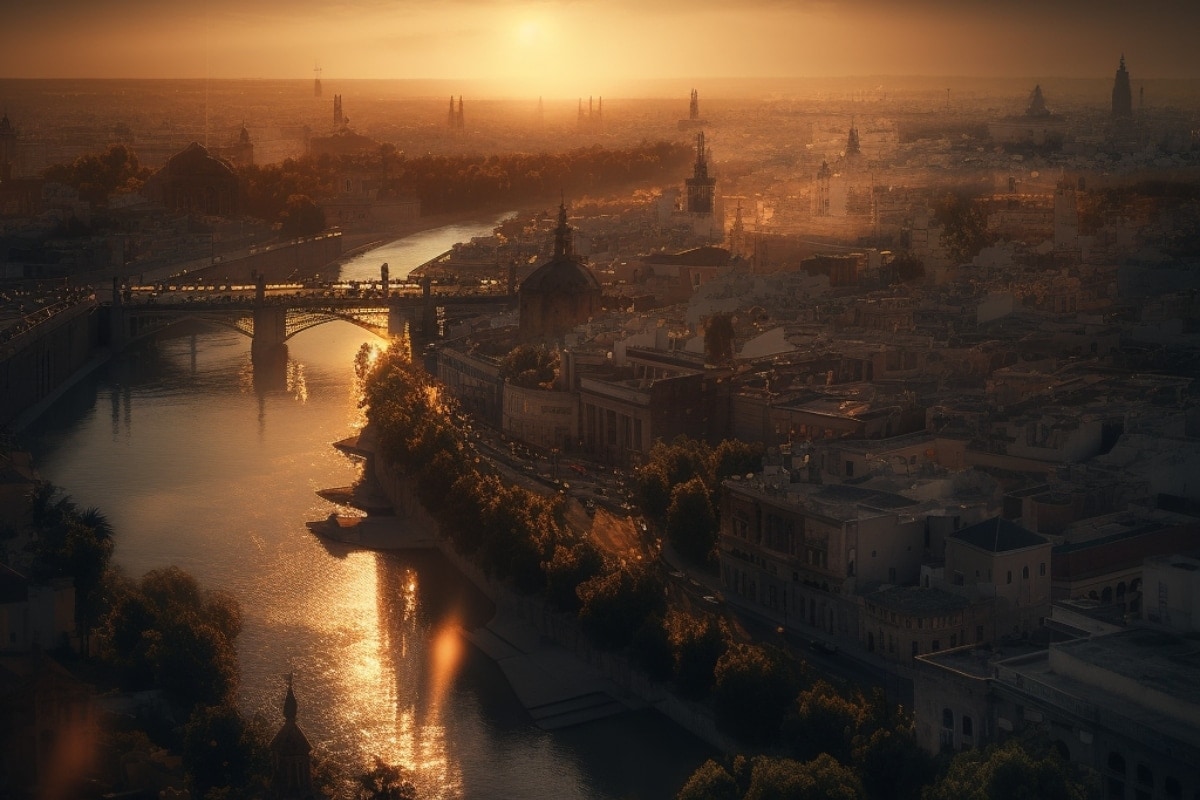
Day 4: Trip from Seville to Cordoba
Cordoba is only 45 minutes from Seville, so stay in Seville and take the local train or bus to Cordoba. What to do there read in our article.
In the evening, return to Seville, from where you will continue to Cadiz the next day.
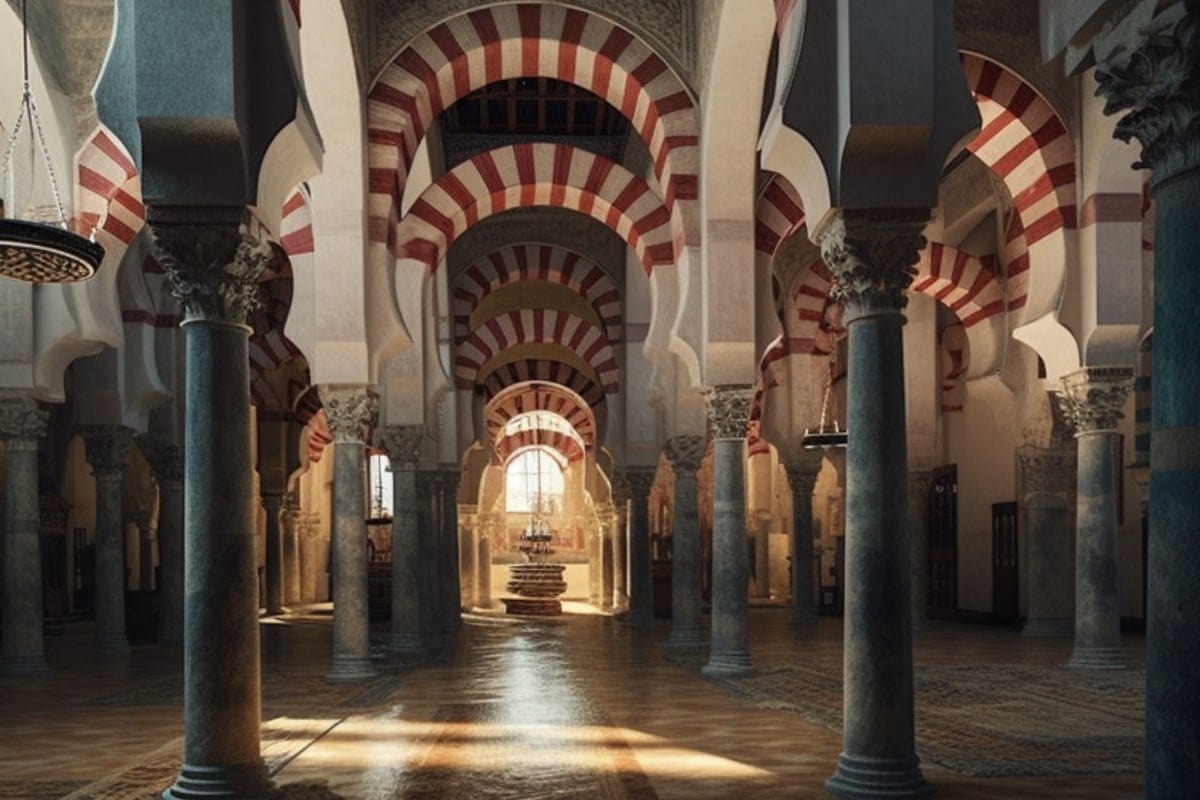
Day 5: Seville – Cadiz (1 hour 30 minutes)
After breakfast, head to the ancient port city of Cadiz. Visit the Cathedral, a mixture of Baroque and Neo-Gothic styles, Torre Tavira, a viewing tower with a camera obscura, and Playa de la Caleta, a picturesque beach between two fortresses.
Where to stay in Cadiz: For example, stay at Hotel Pinomar.
Day 6: Cadiz – Tarifa – Gibraltar (2 hours with a stop in Tarifa)
Head to Gibraltar, which is part of the UK (so don’t forget your documents) but is the perfect place for a trip. On the way, stop in Tarifa, a picturesque town at the southernmost tip of Spain, where the Mediterranean meets the Atlantic Ocean. This unique location makes Tarifa a popular destination for water sports enthusiasts, especially kitesurfing and windsurfing.
Gibraltar is a British overseas territory located at the southern tip of the Iberian Peninsula. Its dominant feature is the Rock of Gibraltar, an imposing limestone formation that offers spectacular views of the Strait of Gibraltar and the African coastline.
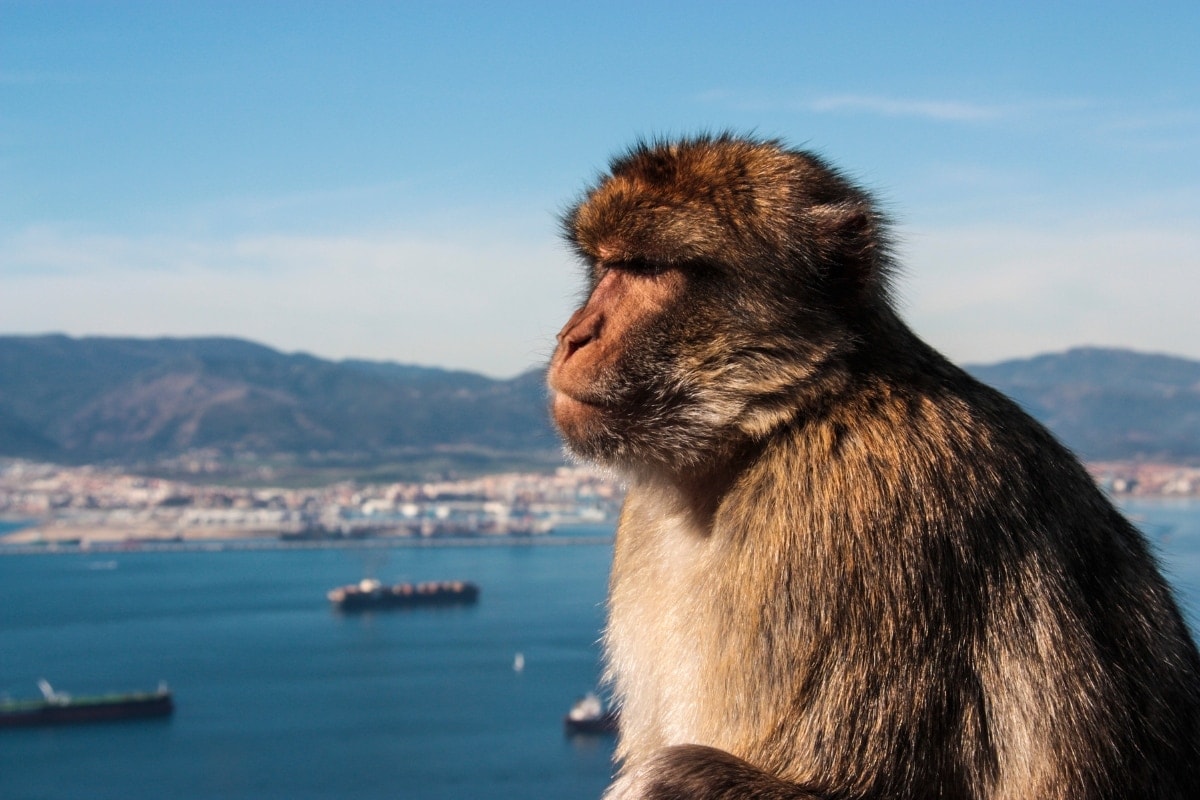
When visiting Gibraltar, you can visit the Caves of St. Michael, which are located inside the rock and served in the past as a military shelter. Here you can also meet the famous Gibraltar monkeys, which are the only wild primates in Europe. Watch out for snacks.
Finish the day in Estepona or Marbella.
Where to stay: Enjoy your stay at the luxurious Amàre Beach Hotel Marbella – Adults Only or the cheaper B&B Boutique Tribeca.
Day 7: (optional) Marbella
Enjoy the sun and sea on some of Marbella’s beautiful beaches, such as Playa de la Fontanilla or Playa de Puerto Banús. Gain strength for your next journey. If you’re not the type to lounge by the sea, book a trip to Caminito del Rey.
Rest and dinner at the hotel
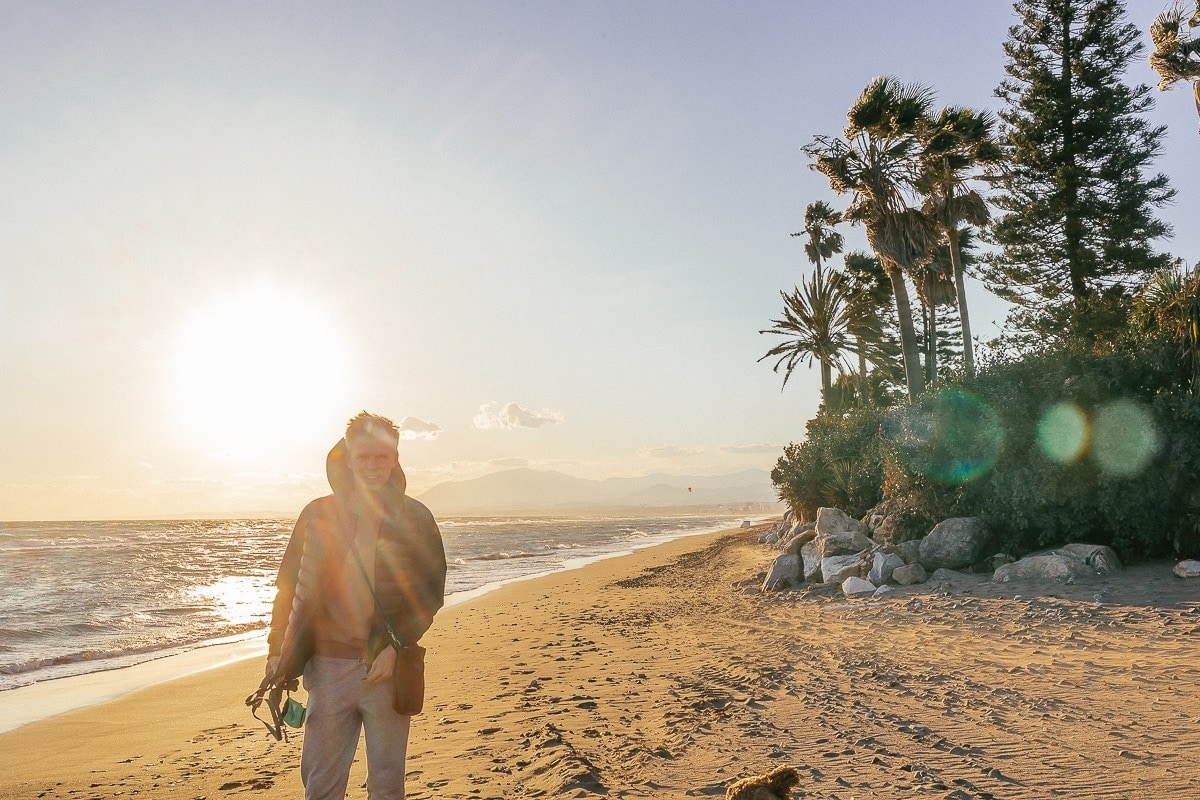
Day 8: (optional) Exploring Marbella’s surroundings
Marbella is a great base for exploring the surrounding towns. For example, you can head to Estepona and walk around the picturesque harbour and visit the traditional fish market.
Going further south, you can visit Casares, one of the most beautiful “pueblos blancos” (white villages) in Andalusia. Wander the narrow, steep streets and visit the castle and the Church of Nuestra Señora de la Encarnación for panoramic views of the surrounding countryside.
On the way back to the coast, stop in Manilva and sample traditional Andalusian dishes such as tapas or paella at one of the local restaurants. And then you can continue further east to Ojén, this charming mountain town is famous for its traditional white houses, wine museum and the Cueva de las Columnas cave.
A very popular white village to visit is also Mijas on the mountainside. Visit the Nuestra Señora de los Remedios Church and enjoy the spectacular views of the Mediterranean Sea.
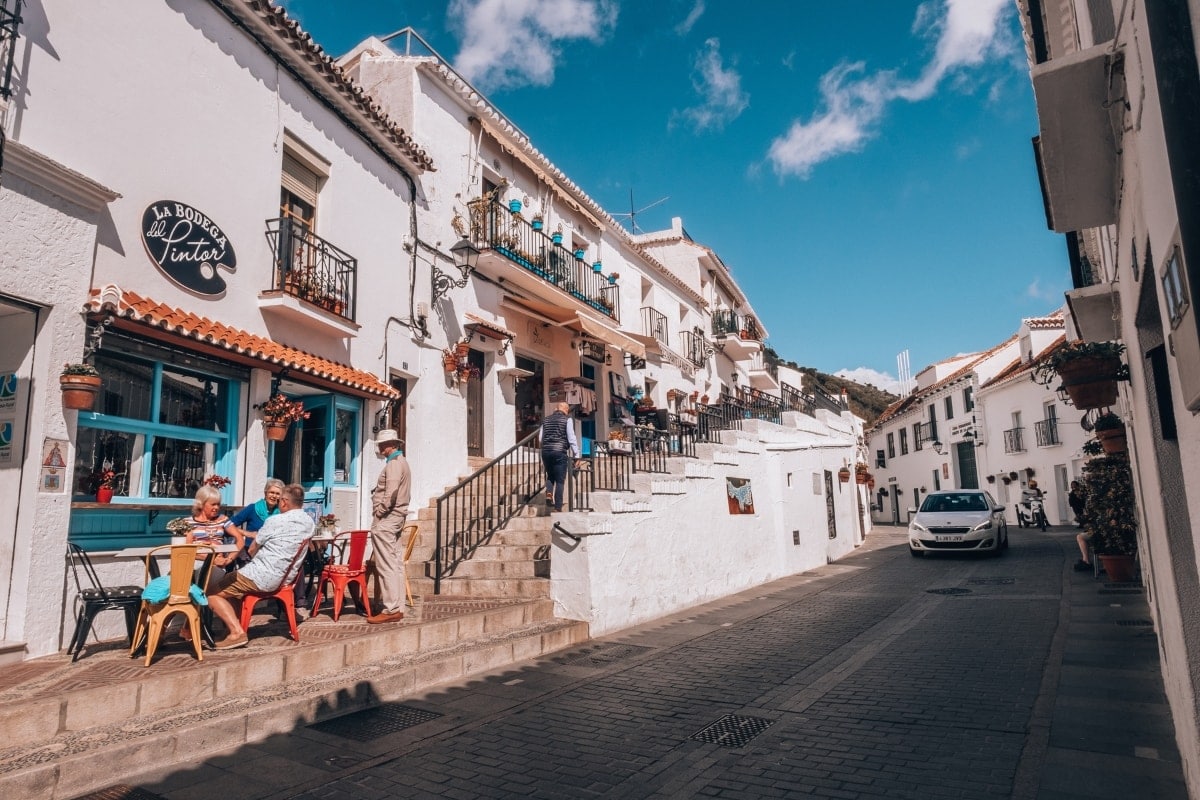
Finish today with a stop in Fuengirola, a port city with long beaches and a lively nightlife.
Day 9: Marbella – Sierra Nevada – Granada (2.5 hours + 1.5 hours)
Explore the Sierra Nevada, a majestic mountain range where you can ski in the winter and go biking or hiking in the summer. The highest mountain is Mulhacén, the highest peak in mainland Spain. What to see in Sierra Nevada in Spain
- Alpujarras mountains: visit the picturesque mountain villages of the Alpujarras mountains, such as Pampaneira, Bubión and Capileira.
- Trevenque Peak: Hike to the top of Trevenque Peak, which offers spectacular views of the surrounding landscape and mountain ranges.
- Mulhacén: You can go to the highest mountain in mainland Spain, Mulhacén.
- Mountain biking: the Sierra Nevada is a paradise for mountain bikers.
- La Calahorra: Visit the historic castle of La Calahorra, located in the village of the same name. The castle stands on a hill and offers a spectacular view of the Sierra Nevada.
In the evening, transfer to Granada and check in. This will allow you to get to the sights, which are extremely popular with tourists, on time in the morning.
Where to stay: Stay in Granada.
- Cheap accommodation: Hotel Macià Real De La Alhambra
- Luxury accommodation: Boutique Hotel Luna Granada Centro
Day 10: Granada
Things to do in Granada can be found either abbreviated above or in our article. Stay in Granada or move to Malaga. It depends on whether you prefer to leave more time for sightseeing or prefer an extra day by the sea.
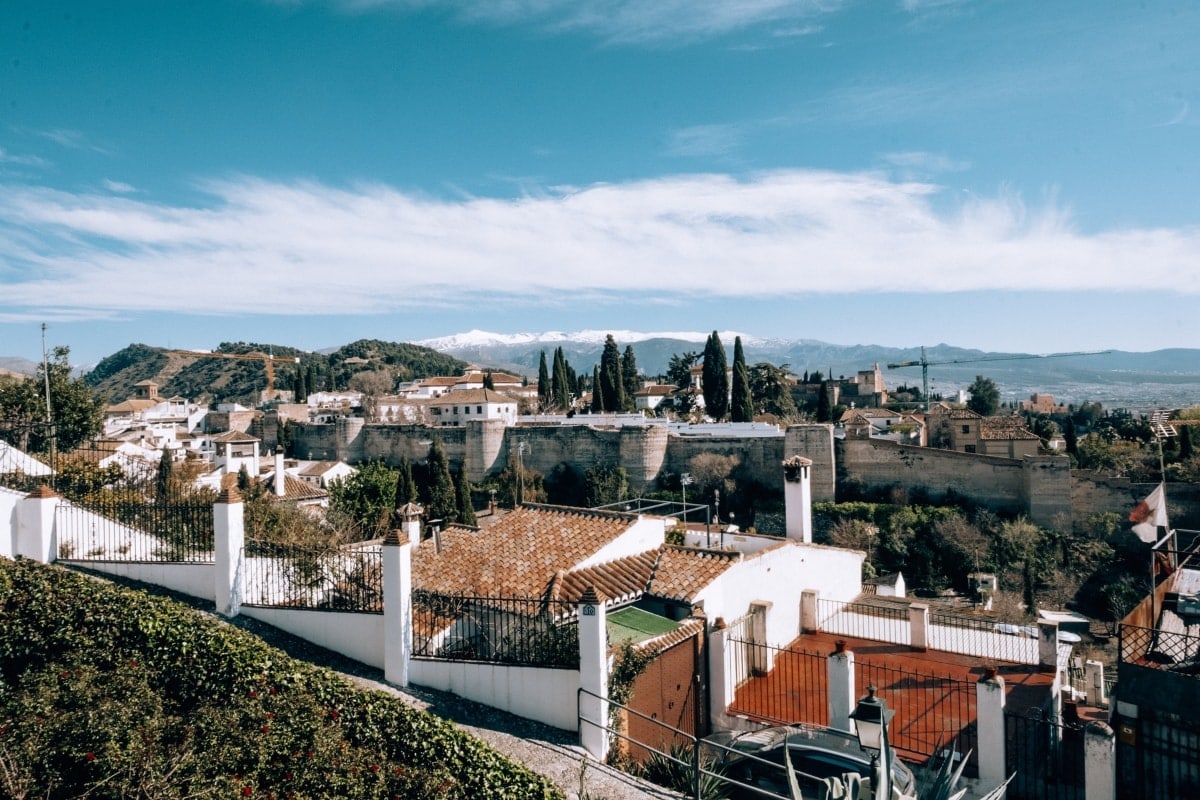
Day 11: Granada – Málaga (1 hour 30 minutes)
Head back to Malaga and explore the local beaches, or if beaches don’t appeal to you at all, you can explore the surrounding towns you missed during your stay in Marbella. You can read what to do in Malaga in our article.
Where to stay in Malaga: If you’re looking for something more luxurious, check out the H10 Croma Málaga, a cheaper hotel in the centre of Malaga is the Carlos V Malaga.
Day 12-14: Málaga
Enjoy a holiday by the sea on the most popular Costa de Sol.
Map with points of interest on your phone
Save a map of the best places in Andalusia directly to your phone. After purchase, you will receive a link to a non-public Google Map, which you can save by clicking ”Follow/Follow”. This will copy it to your Google account and display it on all devices where you use Google Maps.
What to do in Andalusia with children?
There are several water parks in Andalusia that offer fun for the whole family, such as Aquatropic in Almuñécar or Aquapark Mijas on the Costa del Sol.

